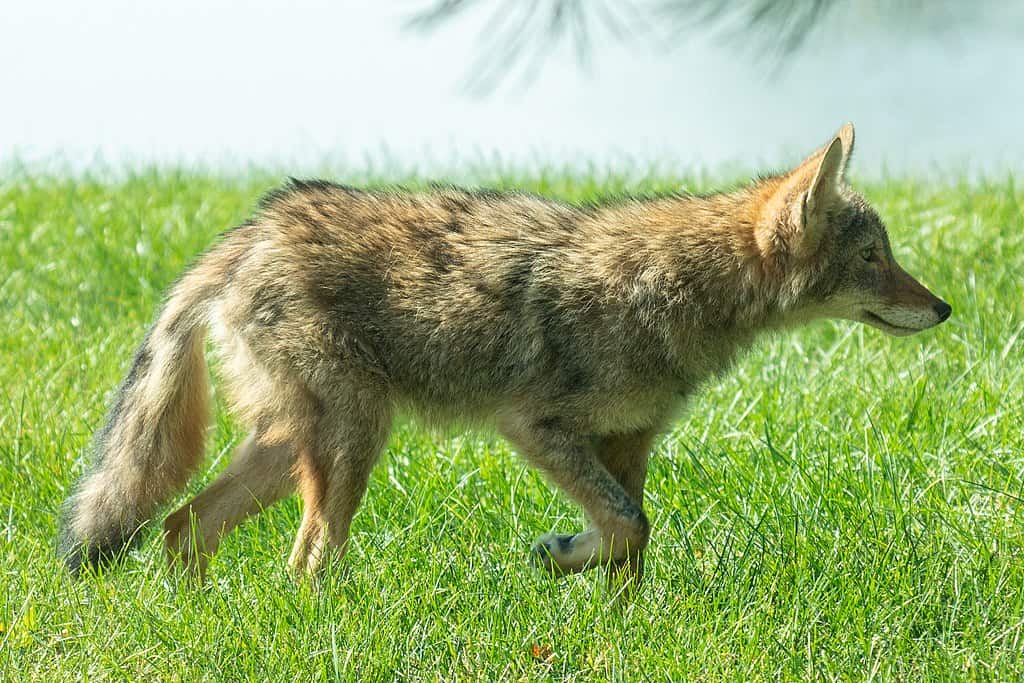Get ready to be amazed as we delve into the captivating realm of Illinois animals and wildlife! The remarkable diversity of creatures inhabiting the state often catches many by surprise. Whether you’re in the midst of Chicago’s urban hustle or along the serene shores of Lake Michigan, Illinois offers a staggering variety of natural wonders just waiting to be explored.
Nestled along the banks of Lake Michigan, you’ll even find a peculiar, backward-flowing river in the heart of Chicago, teeming with life. You can find out more about the 13 best lakes in the United States for fishing. These waters are not just scenic; they’re a haven for a plethora of wildlife, including mammals, birds, fish, reptiles, insects, amphibians, and a host of other captivating creatures that call Illinois their home.
Read the entire article or jump to any section.
Key Points
Exploring the Wild Side of Illinois: Wildlife and Their Habitats
| Location | Wildlife Highlights |
|---|---|
| The Driftless Area | A birdwatcher’s paradise along the Mississippi Flyway; home to trout and freshwater fish. |
| Shawnee National Forest | Features wilderness areas like Bald Knob, Lusk Creek, and Garden of the Gods. |
| The Mississippi River | Surrounding wildlife refuges such as Crab Orchard, Meredosia, Hackmatack, and Emiquon. |
| Natural and Wildlife Areas | Apple River, Jubilee College, Fox Ridge, Lake Murphysboro, Baldwin Lake, Heidecke Lake, Pekin Lake, Turkey Bluffs, the Kaskaskia River, Siebeck Forest, Volo Bog, and Harry “Babe” Woodyard State Natural Area. |
State Wildlife of Illinois
| Category | Wildlife | Description |
|---|---|---|
| State Mammals | White-tailed Deer | State animal, recognized by its white tail when in motion. |
| State Bird | Northern Cardinal | State bird known for its vibrant red plumage. |
| Native Illinois Wildlife | Bison | Making a comeback in Illinois, best observed from a safe distance. |
| Massasauga | A venomous rattlesnake with unique brown blotches on gray skin and keeled scales. | |
| Striped Bark Scorpion | The most common U.S. scorpion, known for a potentially painful sting. | |
| Cougar | A powerful predator that can pose a threat to humans and large animals. |
Additional Wildlife Highlights
| Wildlife | Description |
|---|---|
| Mischievous Bird Grasshopper | A strong-flying pest that changes coloration from brown to orange and doesn’t undergo metamorphosis. |
| Freshwater Drums | Produces drum-like sounds and is challenging to find due to prolific reproduction. |
| Thirteen-lined Ground Squirrel | Features spots down its back and is a skilled burrower and rodent predator. |
| Bobcat | These felines have made a resurgence in Illinois and are known for their ever-changing fur colors. |
| Coyote | Often mistaken for domestic dogs; good swimmers and capable of running up to 43 miles per hour for short distances. |
| Raccoon | Recognizable by their eye masks; known for vocalizations and adaptability to various conditions. |
| Beaver | Active year-round and famous for dam-building; plays a crucial role in shaping ecosystems. |
| American Elk | Rare in Illinois; report sightings to the Illinois Department of Natural Resources. |
| Black Bear | Recognizable by their rounded appearance; typically non-aggressive but should be treated with caution. |
Places to look for Wild Animals in Illinois

Visitors in Illinois can experience large wild creatures because it is blessed with many wildlife refugee areas. The Driftless Area is a fantastic site for birdwatchers as it is also part of the Mississippi Flyway. You can also witness trout and other freshwater fish in the Driftless Area in the state’s northwest corner.
You can find Illinois animals in other places, including Shawnee National Forest near Harrisburg. Bald Knob, Lusk Creek, and Garden of the Gods are Shawnee National Forest wilderness areas. In addition, areas around the upper and middle Mississippi River, Crab Orchard, Meredosia, Hackmatack, and Emiquon contain other wildlife refuges.
Natural and wildlife areas are Apple River (northwestern Wisconsin), Jubilee College (Brimfield), Fox Ridge (Charleston), Lake Murphysboro, Baldwin Lake (San Bernardino), Heidecke Lake (Grundy County), Pekin Lake, Turkey Bluffs (Randolph County), and the Kaskaskia River.
Siebeck Forest, the Volo Bog, and Harry “Babe” Woodyard State Natural Area are also included in wildlife areas for animals.
State Mammals Illinois
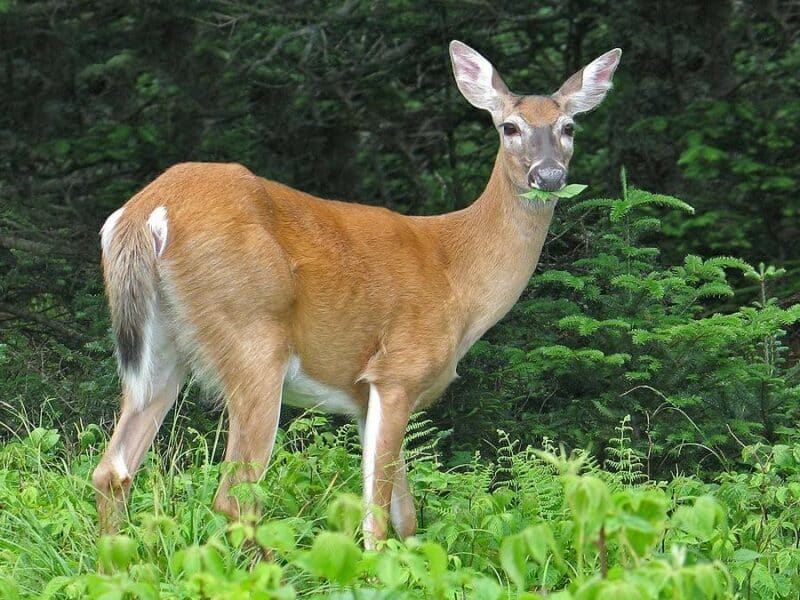
White-tailed deer is one of the most common mammals in the United States and is known as the state animal of Illinois.
It is named white deer because of its tail, and when the tail is raised, its underside is white when it runs.
State Bird the Northern Cardinal
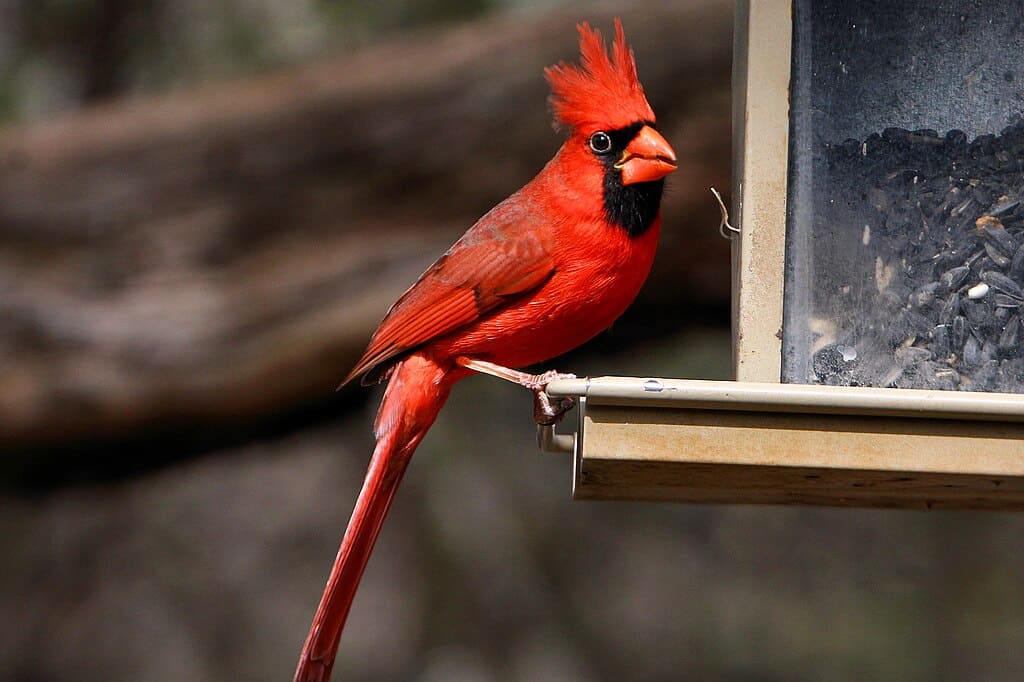
The northern cardinal is the state bird of Illinois, and it stands out because of its beautiful bright red plumage.
A lovely and magnificent red bird.
Bison
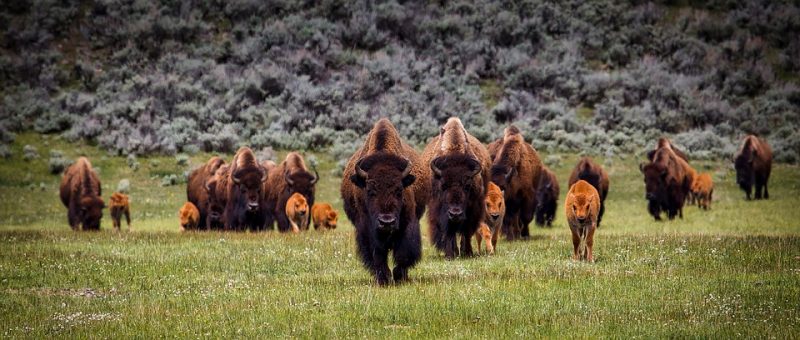
They are considered dangerous as they are irritable and can be wild without warning. After two centuries, they returned to Illinois.
If you see any Bison around you, enjoy their presence from a distance.
Massasauga
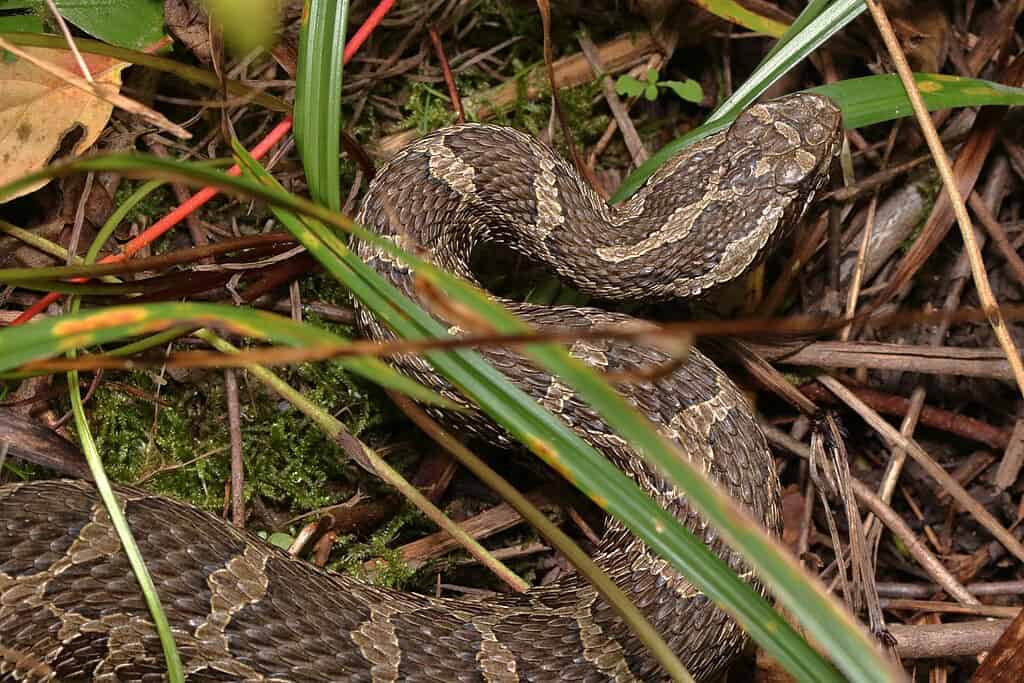
If you ever encounter Massasauga in the woods, you better leave it alone because it is venomous.
Despite being dangerous, Massasauga is a beautiful rattler with a pattern of brown blotches on the gray ground and keeled scales.
Striped bark scorpion

The striped bark scorpion is the United States’ most common insect. Its size is only about 2.75 inches long, which is a medium size for a scorpion.
However, it contains a neurotoxin that is more dangerous to people allergic to its venom. In addition, though their length is not that big, their sting is quite painful and potentially dangerous.
Cougar
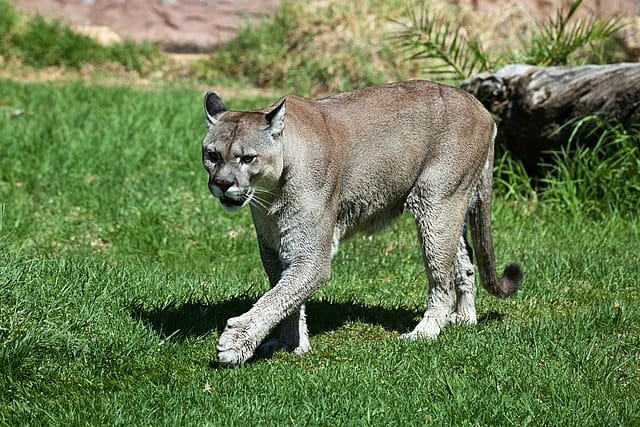
Cougars are considered very dangerous because they have been known to attack humans.
In addition, they are significant predators as they attack humans and other giant animals that are often seen passing through the state.
Wild Animals in Illinois
- There’s a bird grasshopper whose coloration changes from brown to orange, often known as a mischievous bird grasshopper. It’s a strong flyer that causes mischief on ornamental plants by being a pest. It grows from a tiny grasshopper into a full-grown one and does not undergo metamorphosis like other grasshoppers.
- The freshwater drums are named like this cause the sound of grown males resembles drumming or grunting. Freshwater drums reproduce so lavishly that they are hard to find in nature.
- The thirteen-lined ground squirrel has spots down its back, and it looks like a cross between a squirrel and a chipmunk. It digs many burrows with various chambers as they live in grassland. They also dig a burrow for hibernation. The ground squirrel can even eat a mouse if it catches one, as it is one of Illinois’s many rodent predators.
Bobcat
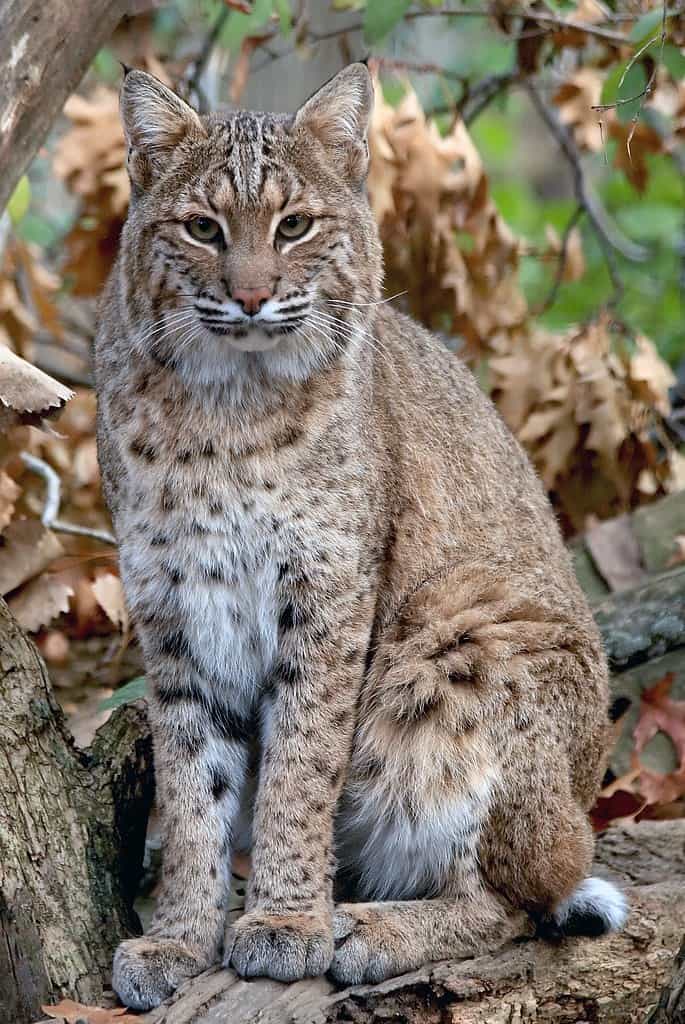
Bobcats are also known as Felis Rufus. In the mid-1900s, they were eliminated from Illinois, but now you can find them statewide. Bobcats are beautiful as they have yellowish to reddish-brown fur, black spots, and streaks throughout.
Their fur keeps changing color; as winter comes, it changes into grayish brown. The fur they possess on the underparts is white with dark spots. The color combination of the fur according to the season is fantastic.
From 1977 to 1999, Bobcats enjoyed protection because they had been classified as endangered animals in Illinois, with their population decimated by the mid-1900s. Although more prevalent in the southern third of the state, Bobcats could also be found across Illinois.
In 2016, a regular hunting season for Bobcats was introduced due to an increase in their population. As the Bobcat population expanded, the Illinois Department of Natural Resources (IDNR) instituted regulations to oversee the Bobcat harvest. These regulations provided opportunities for hunters and trappers to contribute to maintaining a healthy and stable population, particularly in forested areas and along major rivers, ensuring the continued growth of the Bobcat population.
Coyote

Coyotes resemble Canidae (dog family) dogs, such as red fox, gray wolf, and gray fox. Coyote is a medium-sized dog, but they do not exactly look like a dog as their tail is bushier and their nose is more pointed. In addition, they do not keep their tail straight while running. Rather they keep their tail down between their hind legs.
Coyotes are also known as prairie wolves or brush wolves. Illinois pioneers gave this name. To study Coyotes, a lot of work has been done by the Urban Coyote. They are known to be very good swimmers. They can also run up to 43 miles for very short distances per hour. In winter, coyotes’ fur gets thicker than usual, which makes them look larger than they are. As a result, people often get mistaken for giant dogs, whereas they are just medium-sized dogs.
Coyote carries rabies, parvovirus, Sarcoptes scabiei, and canine distemper.
Still, they are not considered a public health concern cause only Sarcoptes scabiei and rabies can be transmitted to humans and have public health implications. In addition, they carry the disease to which domestic dogs, cats, and livestock may be susceptible.
Raccoon
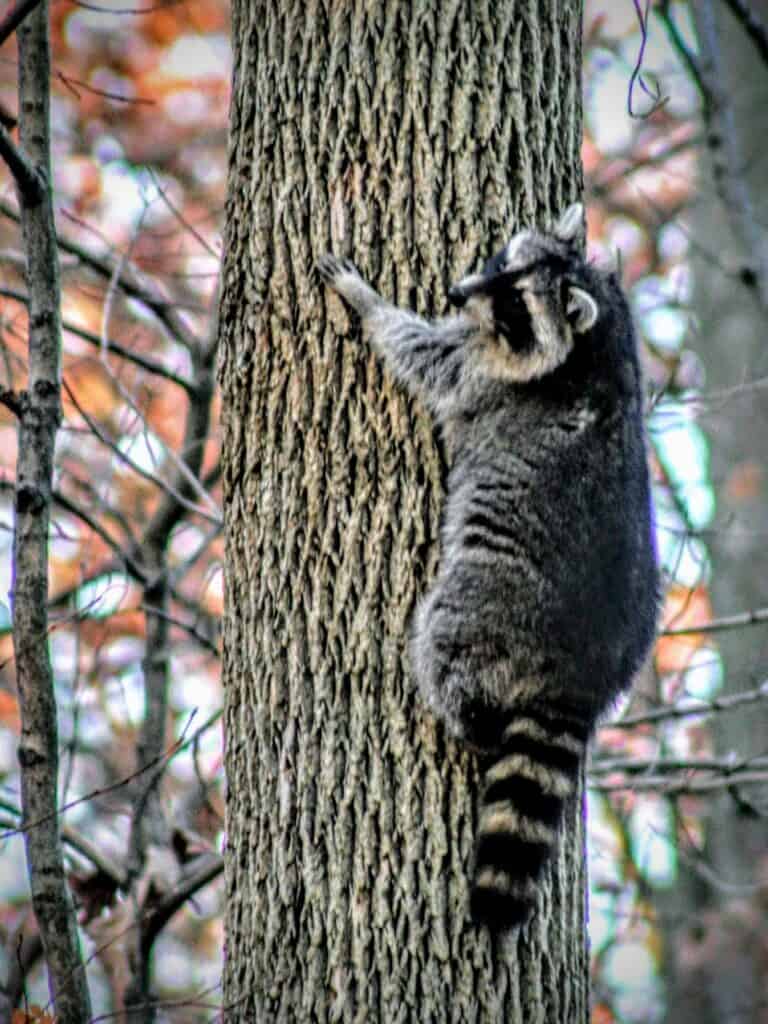
Raccoons are medium-sized mammals with grayish-brown fur and a very eye-catching black eye mask, which is very eye-catching, and this black eye mask often identifies them. The raccoon’s sound is similar to a screeching owl’s whistle. They use vocalization to call each other. They belong to the Carnivora order, badgers, cats, bears, dogs, and carnivores.
Raccoons do not choose to hibernate in severe weather conditions. They chose to stay in their den even in severe winter or summer conditions. They stay in their den with other individuals in areas with a large population of raccoons or winter months and limited shelter. Raccoons are very good at swimming and climbing, and if they sense any danger, they can climb up a tree for self-mechanism. But raccoons can growl and try to defend themselves as far as a raccoon is concerned.
Raccoons can help control insects and rodent populations as they are mesopredators. If the population of raccoons gets too large, they can affect the bird population on a large scale by feeding on eggs and nestlings. And they are available in large numbers in Illinois.
Raccoon roundworm is an Ascarid Nematode that is infectious to humans. They can be infected by many parasites, including different kinds of tapeworms and roundworms. If humans come in contact with or happen to eat or ingest the eggs of roundworms shed in the raccoon feces, they can get infected. So if you come near a raccoon or any physical touch, wash your hand with hot soapy water.
And if you are willing to do gardening, wear gloves as a precautionary measure.
Beaver
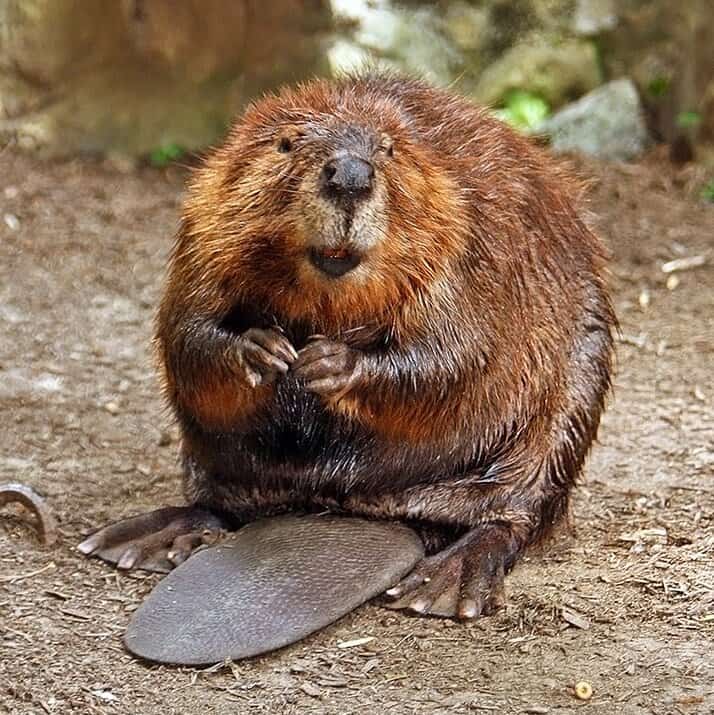
American Elk no longer roam Illinois in substantial numbers, as they vanished from the state by the early 1800s, having once been widespread across the region.
Today, landowners primarily hold these elk in captivity, leading to a significant reduction in their population. Anyone who observes free-ranging American Elk in Illinois is strongly encouraged to immediately report such sightings to the Illinois Department of Natural Resources.
The beaver is one of the animals in Illinois that do not hibernate. They have to store food for the winter. Every animal has their response to danger, so when beavers sense any danger around, they slap their tails against the water so they can also warn the beavers nearby. Usually, they are calm, but they can be quite aggressive when concerned.
Beaver plays an essential role in functioning the ecosystem properly, whereas the beaver dam-building can cause problems for people. Beavers create homes for mammals, reptiles, amphibians, waterfowl, and shorebirds as they control the water level and create wetlands and other habitats.
American Elk
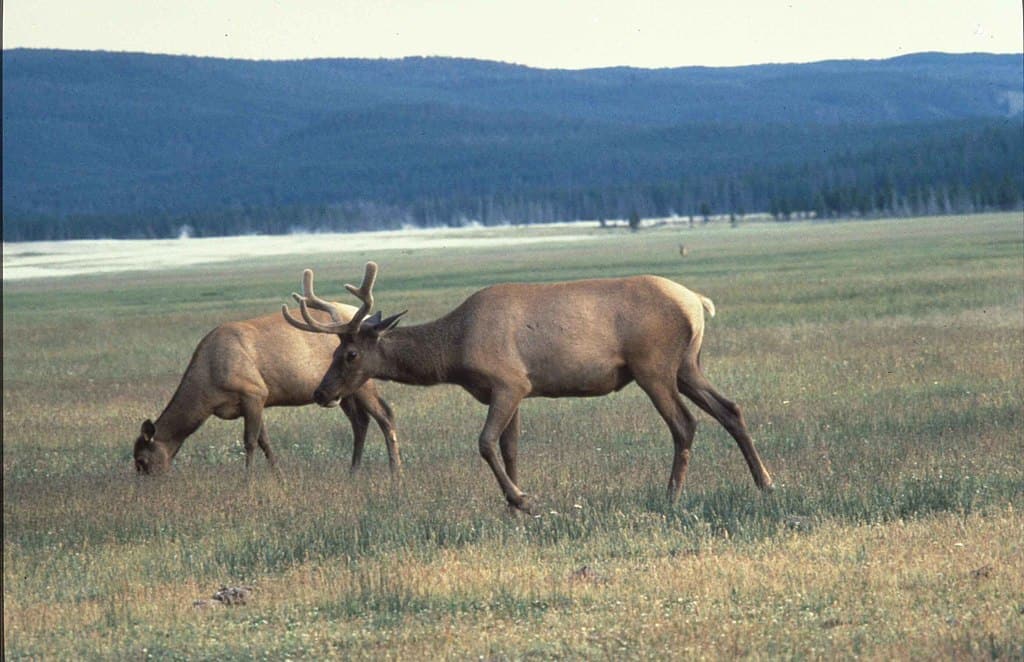
American Elk no longer roam Illinois in substantial numbers, as they vanished from the state by the early 1800s, having once been widespread across the region.
Landowners primarily hold these elk in captivity today, resulting in a significant decline in their population. Anyone who encounters free-ranging American Elk in Illinois is strongly encouraged to report such sightings promptly to the Illinois Department of Natural Resources.
American Elk in Illinois outsize white-tailed deer, featuring distinctive characteristics such as reddish fur, small tails, and a buff-colored rump patch. Male Elk can weigh up to 700 pounds, while female Elk typically weigh around 500 pounds.
Black Bear
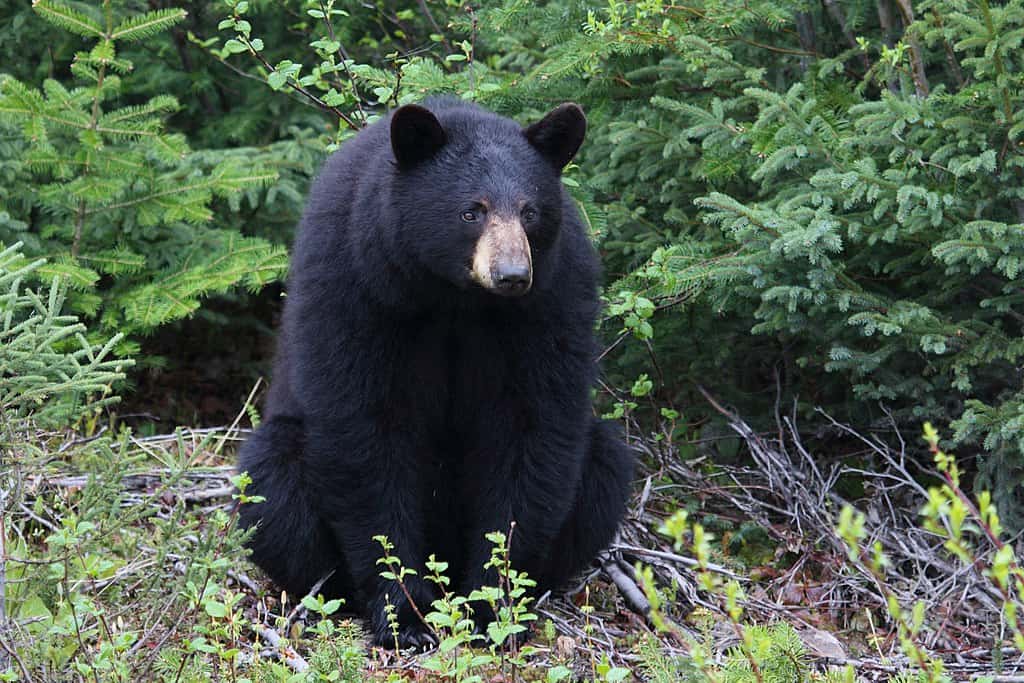
Black bears can show two types of behavior. They can either get offensive or defensive. You do not need to run if you see any black bears around you because they do not attack humans unless they feel in danger. They usually attack or respond to the situation if they feel trapped or provoked. It is better that you do not approach this animal, try to respect their privacy.
Black Bears do not attack first, but if you come across one, try to enter the building or get into the vehicle and let the black bear know that you are not there to harm or make them uncomfortable. If they feel danger, they will pop their jaws, blow air out of its mouth, and vocalize or lunge toward them. So when you see this kind of behavior, you better stay away.
Summary of Animals and Wildlife in Illinois
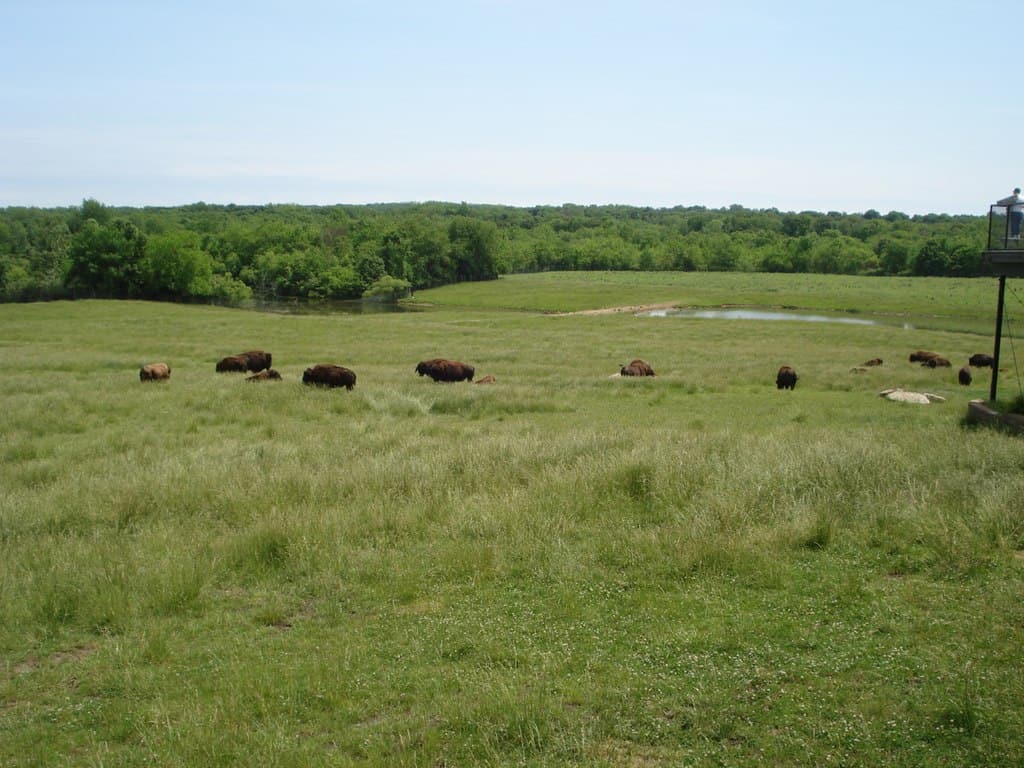
Many incredible animals are home in Illinois. The state offers excellent nature and a lot of things to see. We hope you like this article about the wildlife in Illinois.
If you plan to travel to North America for wildlife encounters, look at these blogs; wildlife in California and Colorado.
Join our Forum for free today!

- These are The 5 Largest Great White Sharks Ever Recorded - July 19, 2024
- The Surprising Benefits of Big Game Hunting - July 18, 2024
- $100k+ Hunting Experiences The Most Expensive Animals to Pursue - July 17, 2024

